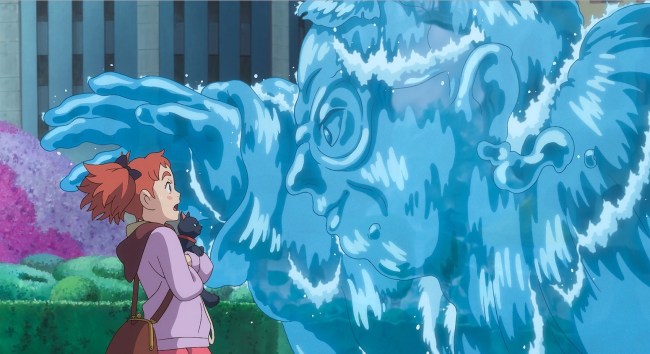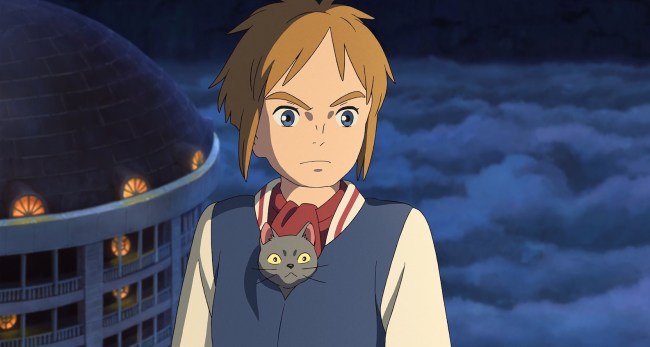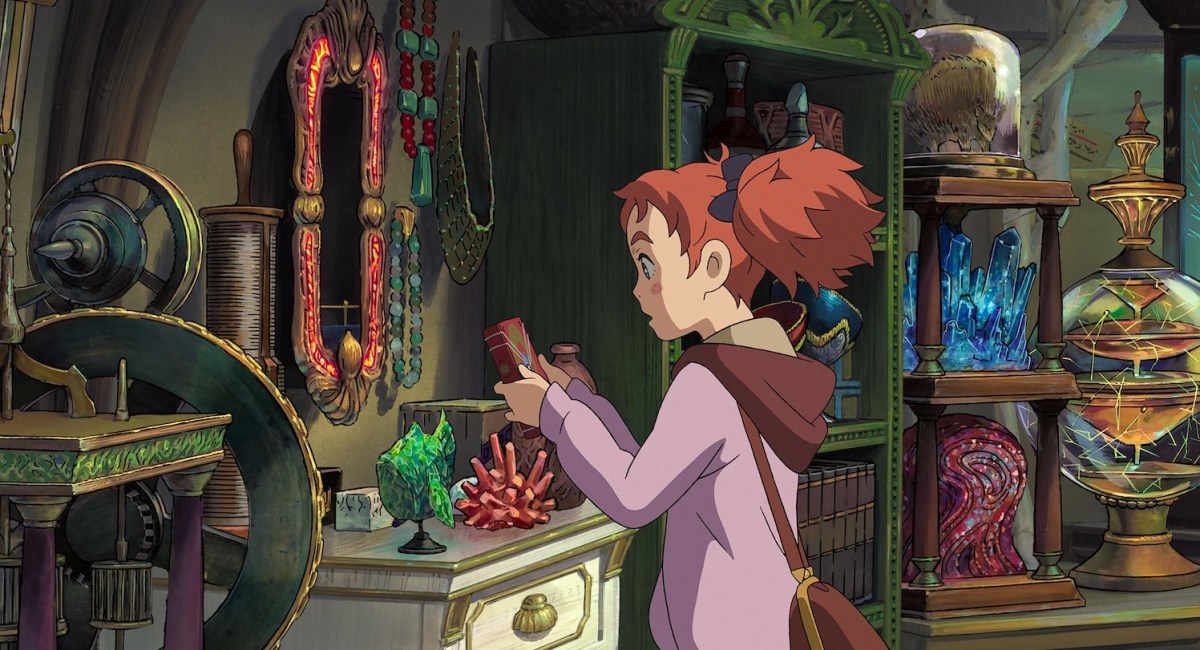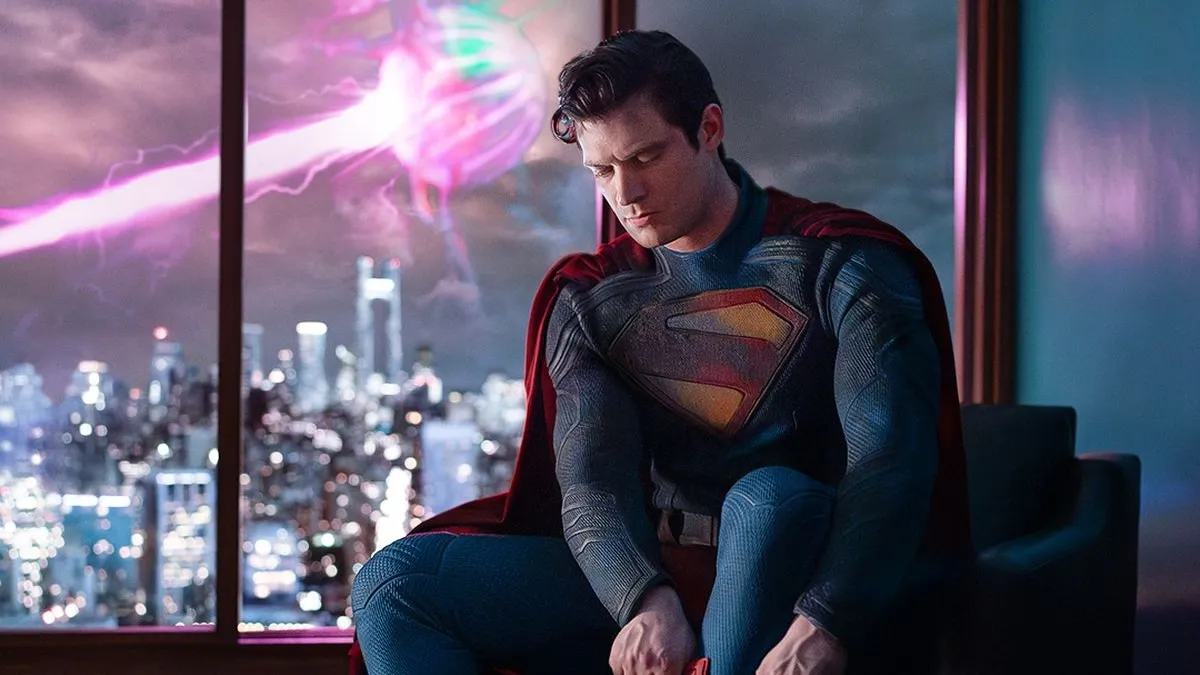This week we’ll be seeing the release of Mary and The Witch’s Flower, the debut film of Studio Ponoc, a new studio made largely of former Studio Ghibli employees. Fans of the iconic animation from Ghibli will no doubt be thrilled to watch the film, which will be familiar in its dynamic style, thoughtful young characters, and spellbinding magical world.
Based on Mary Stewart’s 1971 children’s book, The Little Broomstick, the story follows a young girl named Mary who’s bored by everyday life with her Great-Aunt Charlotte. Mary is then thrown into a magical world when she discovers a rare flower and an old broomstick which take her to Endor College—a school of magic run by headmistress Madam Mumblechook and the brilliant Doctor Dee. Mary is soon to find that “there are terrible things happening at the school, and when Mary tells a lie, she must risk her life to try to set things right.”
Far from a break from Studio Ghibli’s style, fans will find images and scenes in Mary and The Witch’s Flower reminiscent of Howl’s Moving Castle, Kiki’s Delivery Service, or Spirited Away. Rather than feeling redundant, however, these scenes remind us of the magic we loved in Miyazaki’s films and assure us that Ponoc will carry on this beloved heritage. With a translator, I had the opportunity to speak to founder and producer Yoshiaki Nishimura (The Tale of Princess Kaguya) and animator/director Hiromasa Yonebayashi about the film and how it was, in many ways, about that new beginning. Some sentences were edited for clarity.

The producer and Yonebayashi had worked together on When Marnie Was There, and the director had also worked as an animator on Spirited Away, Howl’s Moving Castle, and Ponyo before directing The Secret World of Arrietty. “As you know, Studio Ghibli closed its production division in 2014,” says Nishimura, “and so the creators all were disbanded at that time. But there are many of us who want to continue making the kind of animation that Studio Ghibli made using the heritage that we have from Studio Ghibli.” He sought out Yonebayashi, Nishimura says, because he “wanted to have a director be able to use the talents that he had as an animator, that kind of dynamic animation that he made and used under Hayao Miyazaki. That’s one of the weapons that he has in order to go forward in the animation field, and in order to have that kind of dynamic animation I thought we needed a dynamic story.”
The Little Broomstick is certainly a dynamic story, with plenty of action and vast, fascinating magic. One of my favorite aspects of Ghibli films is the way the magic is so integrated into the everyday world of the characters. Often, we’ll see something completely fantastical and strange happen without explanation, without commentary, and move on. Mary and The Witch’s Flower is full of these moments, lingering only for a second on a magical classroom or a room full of artifacts. It was the perfect choice for the studio.
Nishimura also shares a story about his daughter saying to him, “Papa I love your films (Kaguya, Marnie), but why are they all so sad?”
“That one word really propelled me to look at the topic that would be more of a happy film for the main character,” he says.
As a children’s film, it doesn’t disappoint either. Yonebayashi, on the seriousness with which he treats these subjects, says: “With my previous film When Marnie Was There, I had a chance to speak at the theaters when it would be shown, and usually there would be several rows of children in the front who had come to watch the film. So it really impressed upon me the need to make films that are fun for children to watch, and I hope that whatever new film I make will be to have children enjoy watching the film.” If that sounds familiar, it’s because he clearly inherited the same respect for children that Hayao Miyazaki always preached.
“When we opened the new studio, Studio Ponoc, I went to report this to Mr. Miyazaki,” he went on, “and he gave his blessing and said, ‘You really need to have the conviction to go create a new film studio and the conviction to show children worthwhile films. And every film you make, you’ll have to realize that has to be a film that is worthy to show to children’. And children are very sensitive to films that they see and they’re very affected by the film, so we mustn’t go against that kind of trust that the children have in us for having made the film. I would hope that we can make films that can appeal to children, as well as have an impact on adults and I want to continue that spirit in making my films.”

It’s often said that art is always, to some extent, autobiographical. Yonebayashi spoke about his desire to improve his style, and how he sees himself in the small progress that his characters make. Typically, they aren’t hugely dramatic coming-of-age incidents, but small episodes of childhood and change. “I’m always in the midst of developing my style and myself and I haven’t reached that goal—I keep wanting to change myself,” he says. “The three films I have directed have featured young girls as heroines and in these films each of them takes a small step forward. These films don’t depict a huge major growth or change in these characters—but this one as well, Mary is able to take her next step forward. So as these young girls have changed in their film, I would also like to change.”
He wishes the audience will have a similar take-away, adding, “I think there are many young people in the audience who view the film wanting themselves to be able to change and change themselves to take the next step forward and I hope that they’ll see Mary’s actions and be encouraged and gain the courage to take their next step forward.” Considering the studio takes its name from the Serbo-Croatian word ponoć, meaning “midnight,” to signify the “beginning of a new day,” Mary and The Witch’s Flower is a declaration of their strength moving forward.
The film comes to theaters January 19th, but will have a Special Fathom Events premiere screening on the 18th. You can grab your tickets here.
(image: GKIDS)
Want more stories like this? Become a subscriber and support the site!
—The Mary Sue has a strict comment policy that forbids, but is not limited to, personal insults toward anyone, hate speech, and trolling.—








Published: Jan 15, 2018 10:12 am